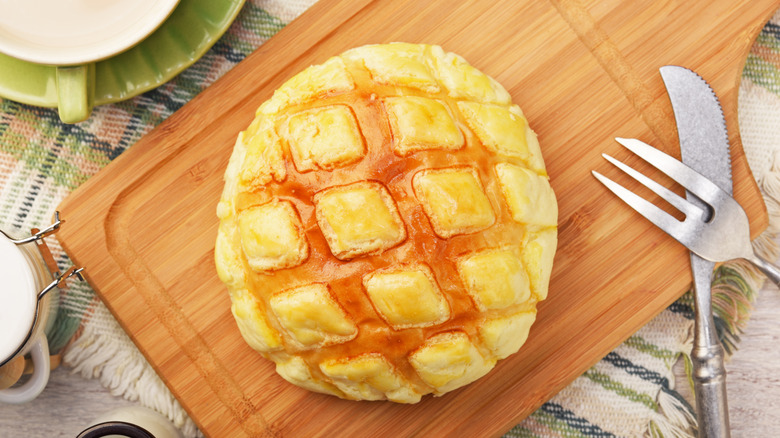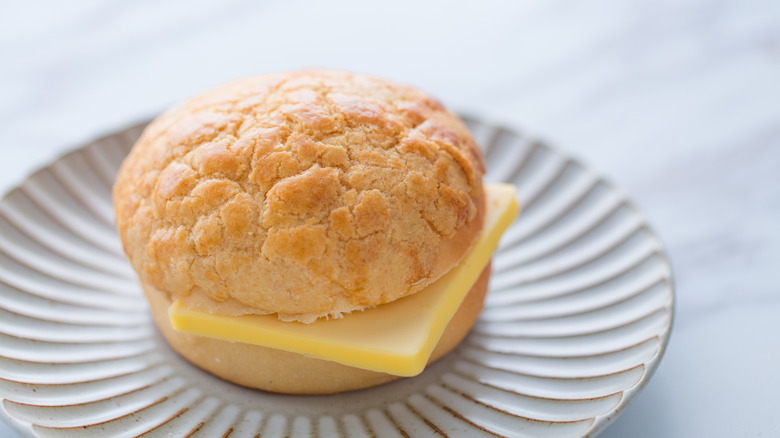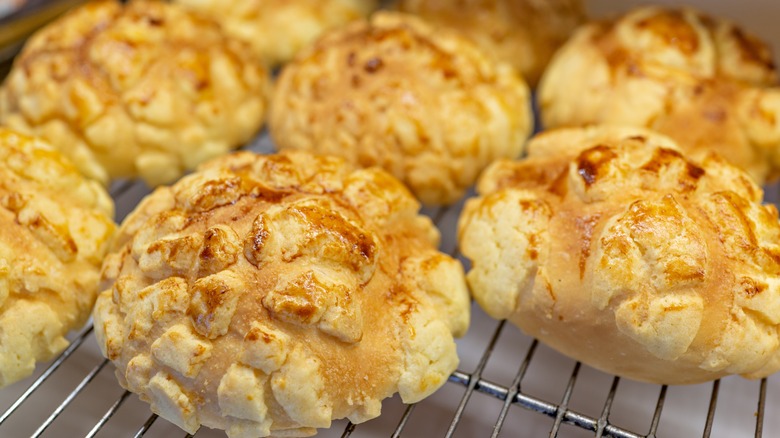What Hong Kong-Style Pineapple Buns Are Really Made Of
There are multiple origin stories for the pineapple bun, which has been made in Hong Kong since at least 1942, when Hong Kong's Tai Tung Bakery was first opened. Shop owner Tse Ching-yuen told Goldthread that he has been making pineapple buns since he was 11 years old, and though he confirms that "something similar" already existed in Japan before those days, he said the pineapple bun's "ultimate origin is unknown."
Even Lau Chi-pang of Hong Kong's Lingnan University admits that the origins of the territory's signature bread are unclear. "There's a lot of hearsay," Lau, who has been investigating the topic for years, said to China Daily. "Some claim it's from Southeast Asia, but there's no evidence of it appearing in Singapore or Malaysia. One of my colleagues interviewed an old man in his nineties who claimed the bun was invented in Guangzhou. It's possible...but there are no bolo bau in Guangzhou today."
Though the history of the pineapple bun is murky, its ingredients are as clear as day — and they might surprise you.
Spoiler: There's no pineapple
Fruit fans may have some expectations to manage when they order pineapple buns from an Asian bakery. While the multi-textured treats are certain to please, they may not exactly satisfy a fruit craving, simply because they don't have any fruit to speak of. Confusingly, these buns often boast a criss-cross pattern resembling, if you squint hard enough, the surface of an unpeeled pineapple. Rest assured, though, there is actually no trace of the fruit in the recipe.
Pineapple buns, also known as bo lo bao, are a staple at just about all Asian bakeries. They're pillowy soft, white, tangzhong-style rolls that are topped with a golden yellow layer (made from a sweet paste of flour, butter, sugar, egg, and just a hint of vanilla) and baked to a crusty perfection, per Epicurious. Bo lo bao can be enjoyed any time of day, but they're especially good for breakfast when they are fresh out of the oven, spread with a thick slab of butter and served with a cup of milk tea, says TasteAtlas.
The pineapple bun has a cousin called the Mexican bun
While the pineapple bun's history is mysterious, much more is known about its cousin, the "Mexico bun." With an almost identical appearance to the pineapple bun, the Mexico bun can reportedly be traced back to one Chinese Mexican family, the Ngs, who had settled in Hong Kong after being thrown out of Mexico in the 1940s. For their bakery, they created a topped roll described as a cross between the pineapple bun and a similar Mexican pan dulce, or sweet bread, known as the concha, per Zolima CityMag.
China Daily says one of the reasons why so many of Hong Kong's cookery stories and recipes are lost to time is simply because few people could bothered to write things down. Even the scholarly Lau admits that thanks to a lack of documentation, many historians "have no idea where to start" when uncovering culinary stories. What chefs and cooks are clear about, on the other hand, is how dishes should look and taste, which suit Hong Kong's pineapple bun customers just fine.


